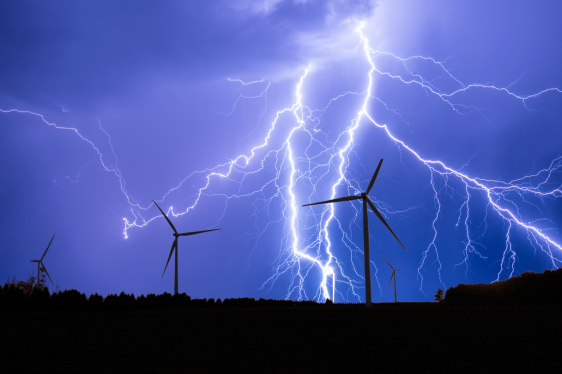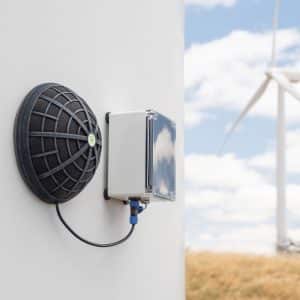TECHNOLOGY | 7 MIN TO READ
5 challenges with lightning strikes on wind turbines

Wind energy has emerged as a pivotal player in the global transition towards sustainable power sources. As wind turbines stand tall and harness the power of the wind, they are not without their challenges. One significant challenge that engineers and operators grapple with is the impact of lightning strikes on these towering structures.
1. Structural Damages
Lightning strikes bring a unique set of challenges for wind turbine operators. The intense heat generated during a strike can compromise the structural integrity of various components. From blades to towers, being vigilant about potential damage is crucial for ensuring the safety and longevity of the turbines.

2. Blade Erosion
Beyond the immediate effects of a lightning strike, operators need to be aware of a subtler adversary – blade erosion. The heat from lightning can cause erosion and pitting on the turbine blades, affecting their aerodynamic efficiency over time. Regular inspections become a frontline defense to spot and address this silent challenge.
3. Electrical systems under scrutiny
The intricate electrical systems that power wind turbines are susceptible to the impact of lightning. High currents and voltages can damage critical components, leading to potential malfunctions. For operators, understanding the vulnerability of these systems is key to minimizing downtime and maintenance costs.
4. Fire risks and emergency response
With the combination of lightning’s heat and turbine materials, operators must be attuned to the risk of fires. Establishing robust emergency response protocols is not just a safety measure for the turbine but also for the surrounding areas. Swift action can make a significant difference in minimizing damage and ensuring the safety of both equipment and personnel.
5. Downtime and mainenance cost - a balancing act
Operators know that downtime is the enemy of productivity. Lightning-induced damage means not just repairs but also a potential dip in energy production. Efficient planning and proactive maintenance strategies are vital for minimizing downtime and keeping the turbines operational.
Strategies to minimise the risks of lightning strikes
What can be done to minimise the risks of lightning strikes on wind turbines? There are various possibilities – we present three strategies below: monitoring tools and early detection, investing in lightning protection systems and adapting environmental practices.
1. Monitoring tools and early detection
In the world of wind turbine operation, knowledge is power. Implementing effective monitoring and detection tools can provide operators with early insights into potential lightning strikes. Early detection allows for timely assessments and proactive interventions, helping to keep turbines operational and reducing the overall impact (i.e. Lightning detection system).

2. Investing in Lightning Protection Systems (LPS)
For operators, investing in reliable Lightning Protection Systems (LPS) is a strategic move. These systems, including lightning rods and grounding solutions, act as a shield against the impact of lightning strikes. Well-designed LPS not only protect the turbines but also contribute to overall operational reliability.
3. Tailoring environmental practices
Wind turbine operators often find themselves in ecologically sensitive areas. Understanding the environmental implications of lightning strikes, especially the risk of fires, underscores the importance of responsible and sustainable practices. Balancing energy production with environmental considerations is a delicate but necessary task.
As wind turbine operators navigate the complexities of their role, understanding and addressing the challenges posed by lightning strikes is essential. By embracing proactive maintenance, investing in monitoring technologies, and implementing robust Lightning Protection Systems, operators can not only weather the storm but also ensure that the turbines they oversee continue to generate clean, sustainable energy for years to come.







